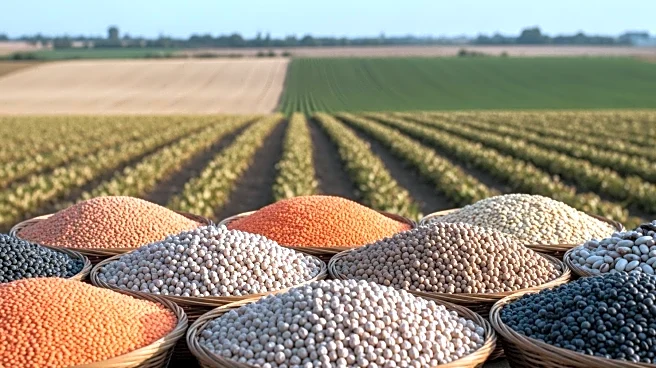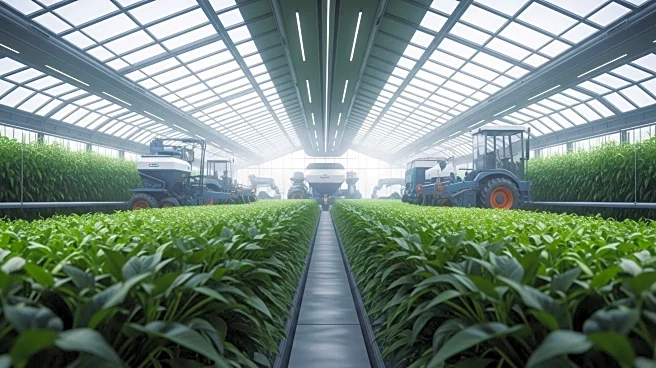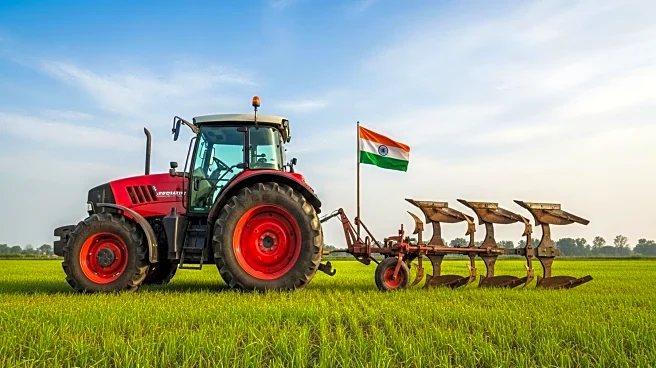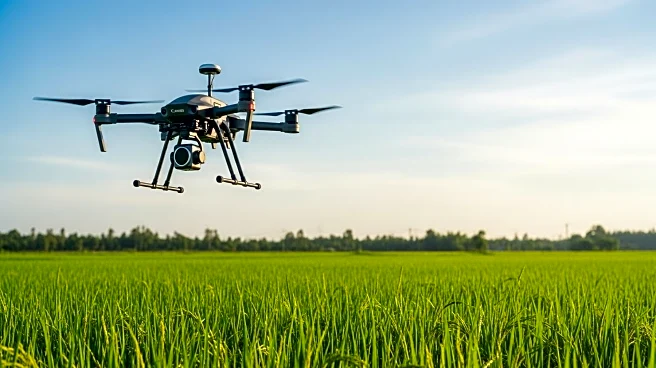What's Happening?
India has initiated a new mission aimed at achieving self-sufficiency in pulses, following a surge in imports that reached a record $5.5 billion in FY25. The Mission for Atmanirbharta in pulses, approved by the Cabinet, is set to run from FY26 to FY31 with a financial allocation of ₹11,440 crore. The initiative seeks to develop high-yield, pest-resistant, and climate-resilient pulse varieties, expand cultivation areas, and subsidize processing units. The goal is to increase production to 35 million tonnes by FY31 and enhance productivity to 1.13 tonnes per hectare.
Why It's Important?
The mission is crucial for India's agricultural sector as it addresses the challenges of low productivity and reliance on imports. By promoting self-sufficiency, the initiative aims to stabilize domestic pulse production, reduce import dependency, and support farmers through assured purchases at minimum support prices. This could lead to improved economic conditions for farmers and contribute to food security. The focus on climate-resilient varieties also aligns with environmental sustainability goals, potentially reducing the need for fertilizers and water usage.
What's Next?
The mission will involve several components, including the development of new pulse varieties and the expansion of cultivation areas. The government plans to subsidize processing units and post-harvest infrastructure, ensuring farmers receive fair prices for their produce. The initiative aims to increase production and productivity, potentially transforming India's pulse sector and reducing import dependency. Stakeholders, including farmers and policymakers, will need to collaborate to ensure the successful implementation of the mission.
Beyond the Headlines
The mission highlights the broader challenges faced by India's agricultural sector, including low productivity and climate vulnerability. Pulses, being more climate-friendly and nutritious, offer significant environmental benefits, such as reduced greenhouse gas emissions and lower water usage. The initiative underscores the need for innovation and investment in sustainable agricultural practices, which could have long-term impacts on food security and environmental sustainability.










